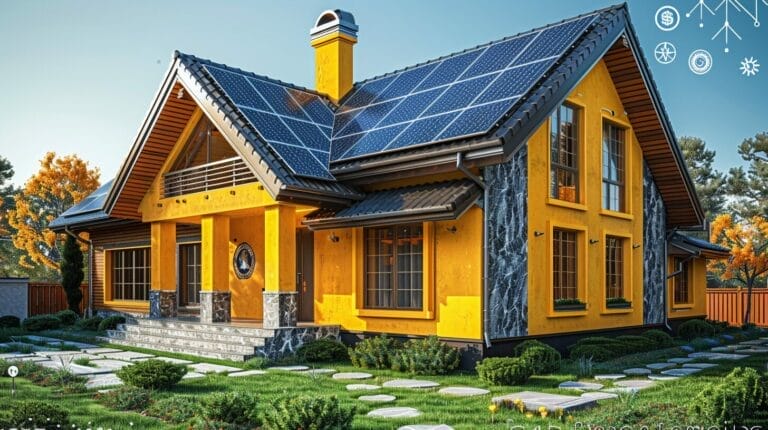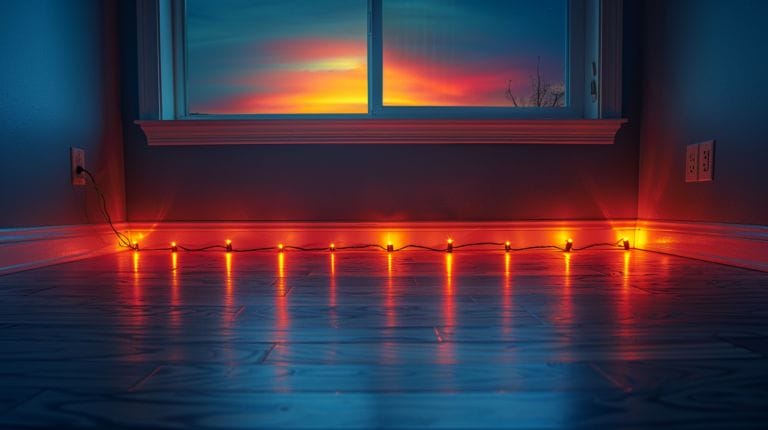Series Parallel Solar Panels: Ensuring Optimal Energy
Imagine a homeowner wanting to harness solar energy for their home but unsure about the best configuration for their solar panels: series or solar panels wired in parallel. The decision isn’t as straightforward as it might first appear. Both series and parallel arrangements have their unique advantages and potential drawbacks.
The secret to the best solar energy utilization from your solar panels lies in understanding these nuances. But how does one decide which configuration is most suitable for their specific circumstances? Join us in our ‘Series Parallel Solar Panels’ guide as we delve into the world of series and parallel solar panel configurations and explore how they can ensure optimal energy for your home.
Key Takeaways
- Solar panels convert sunlight into electricity through solar cells using the photovoltaic effect.
- Wiring panels together in a series connection increases the voltage, while parallel connections increase the current.
- Series connections are more efficient in consistent lighting conditions, while parallel connections perform better in shading or partial shading conditions.
- Optimizing solar panel performance can be achieved through series/parallel configurations, allowing each panel to operate independently for optimal energy output.
Understanding the Basics of Solar Panels and Solar Energy

To grasp the concepts behind series parallel solar panels, it’s essential to first understand the basic principles of how solar panels work, the crucial role of solar cells in turning sunlight into electricity, and the significance of the sun’s position and solar panel angles. Solar panels are devices that absorb sunlight and convert it into electricity through solar cells, which use a process called the photovoltaic effect. This is where the magic of solar energy begins.
When we connect solar panels in series, the voltage increases while the current stays the same. Conversely, when we connect them in parallel, the current increases, but the voltage remains constant. Balancing these two connections can maximize the efficiency of your home solar system, especially when the sun’s position and solar panel angles are taken into account.
The position of the sun and the angle of installation of the solar panel array are crucial in harvesting solar energy efficiently. The closer the panels are to perpendicular to the sun, the more sunlight they can absorb. Understanding these basics is the key to ensure optimal energy output from your substantially spread solar panel array.
Series vs Parallel: The Differences and Their Implications

In a panel series, each solar module is connected end-to-end, increasing the voltage while the current stays the same. This structure is familiar to a marathon, where the energy from each solar panel in the pv array is passed along the line, improving the voltage with each pass.
Contrarily, in parallel connections, the panels are connected side by side, raising the current while keeping the voltage constant. It’s similar to a team relay race, where each panel, even the panel with the lowest efficiency, contributes to higher overall amps of solar panels wired in series.
The choice between connecting solar panels together in series or parallel can significantly influence the efficiency and reliability of your solar generator. Series connections, such as panels wired in series, are often more efficient in consistent lighting conditions, while parallel systems or when panels are wired in parallel can perform better in inconsistent or partial shading conditions.
How to Wire Solar Panels in Series: A Step-By-Step Guide

Let’s delve into the process of wiring multiple solar panels together, in a series. A series connection increases the voltage of each panel while the current remains the same. This arrangement is ideal for solar panel systems that require high voltage.
The initial step includes arranging the number of panels, solar in nature, in such a manner that they face the sun for maximum absorption of energy. Then, connect the positive terminal of one panel to the negative terminal of the next. Repeat this process until all panels are connected.
Here is a simple table for better understanding:
| Steps | Description |
|---|---|
| Step 1: Preparation | Lay out the panels facing the sun |
| Step 2: Start the Connection | Connect the positive terminal of one panel to the negative terminal of the next |
| Step 3: Repeat | Continue until all panels are connected |
| Step 4: Completion | Connect the final positive and negative terminals to the system |
If implemented correctly, this series connection will boost the voltage of your solar panel system, ensuring optimal energy production. However, remember that a single underperforming panel can affect the entire series.
Steps to Connect Solar Panels in Parallel: A Comprehensive Instruction

Switching gears, let’s walk through the process of connecting solar panels in parallel—an arrangement that can offer substantial benefits for your solar energy system. Wiring your solar panels in parallel can dramatically increase the current output, beneficial for homes with high energy demands.
To connect your solar panels wired in parallel:
- Ensure you have the right equipment: a combiner box, sufficient lengths of wire, solar connectors, and your solar panels. Connect each solar panel’s positive terminal to the combiner box’s corresponding positive input. Repeat this step with the negative terminals.
- Connect the combiner box to your solar inverter: This converts the direct current (DC) produced by your panels into the alternating current (AC) used by most household devices.While this method does increase current, it also means that if one panel is shaded or malfunctions, it can affect the performance of the entire system.
Optimizing Solar Panel Performance with Series/Parallel Configurations

After mastering the method of connecting solar panels in parallel, it’s essential to understand how to optimize their performance by intelligently combining both series and parallel configurations in your home solar system. This innovative arrangement, known as series parallel solar panels, offers a balanced approach to maximizing power output and system longevity.
If we’re dealing with shading issues or different solar panel models, a series/parallel arrangement can be a lifesaver. During such situations, this arrangement ensures the best solar energy output as it enables each panel to operate independently.
Here’s how to connect solar panels in a series/parallel arrangement:
| Step | Series Configuration | Parallel Configuration |
|---|---|---|
| 1 | Connect the positive terminal of the first panel in a series to the negative terminal of the next. | Connect all positive terminals together and all negative terminals together |
| 2 | Continue this pattern until all panels are connected in series or parallel. | Ensure all panels are of the same voltage rating |
| 3 | Connect the free positive and negative terminals to your system | Connect the joined terminals from the panels wired in series or parallel to your system. |
Can Horse Arena Lights be Powered by Series Parallel Solar Panels for Energy Optimization?
Harnessing renewable energy, series parallel solar panels offer an innovative solution to power indoor and outdoor horse arena lights, ensuring riders and horses benefit from optimal luminosity, day or night. This green initiative combines efficiency with sustainability, illuminating equestrian activities without tapping into traditional power grids.
Conclusion
So, we’ve explored the basics of solar panels. We’ve also discussed the difference between series and parallel configurations. Furthermore, we provided step-by-step guides for wiring.
By understanding and utilizing these configurations, we can boost our multiple solar panels‘ productivity whether we wire them in parallel or in a series. It’s all about optimizing our renewable energy sources and making the most out of our solar investments.
Remember, every bit of energy saved counts towards a greener and more sustainable future for us all.
Frequently Asked Questions
What is the difference between wiring solar panels in series vs parallel?
When you wire solar panels together in series, the amps in series add up while the current remains the same. In parallel, the current adds up while the voltage remains the same.
Should I wire my solar panels in series or parallel?
Whether you should wire your solar panels in series or as panels wired in parallel depends on the specific requirements of your solar power system. Series wiring increases voltage, while parallel wiring increases current.
What are the benefits of wiring solar panels in series?
Wiring solar panels in series increases the voltage, which can be beneficial for long cable runs and reducing power loss due to resistance.
What are the advantages of wiring solar panels in parallel?
Parallel wiring of solar panels increases the current, which is useful for maximizing the power output and performance of the solar array.
How do I wire solar panels in parallel?
To wire multiple panels in parallel, you need to link the positive terminals together and similarly the negative terminals, thereby effectively increasing the total current output.
What is the impact of wiring solar panels from different manufacturers together?
When wiring solar panels from different manufacturers together, it’s crucial to consider their individual specifications to ensure compatibility and optimal performance. If you’re planning to wire them in parallel or in a series, this factor becomes even more important.







